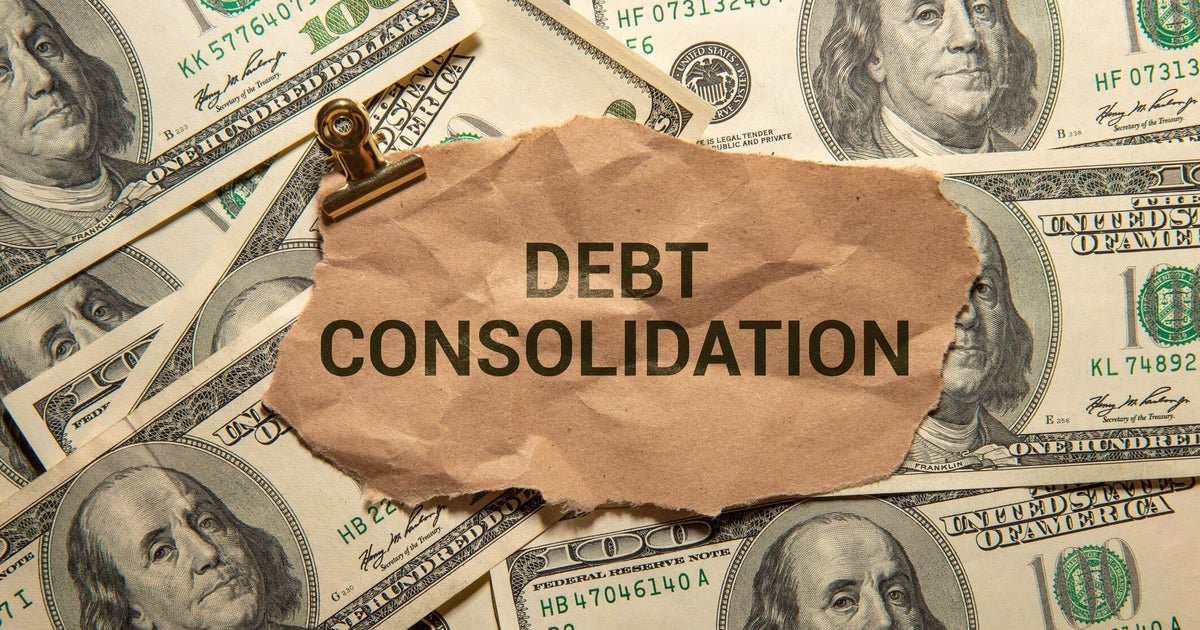Getty Images
In today’s economy, managing credit card debt is a lot harder — and a lot more expensive — than it was just a few years ago. Part of the issue is that years of high inflation have led to higher costs on everything from housing to groceries, and, in turn, many cardholders have had to rely on their credit cards to make ends meet. As of mid-2025, credit card balances are sitting at record highs and the average card rate is also hovering near 22%, so the interest charges are compounding quickly on those unpaid card bills.
As a result, millions of borrowers are struggling just to make the minimum payments on their credit card debt each month. If you’re one of them, it makes sense to look for a lifeline — and while you have numerous options, debt consolidation, in particular, can be a powerful tool. With debt consolidation, the goal is to take your high-rate debts and combine them into one loan with a lower interest rate and a single monthly payment. Over time, this can save you money and make it easier to get out of debt.
But not all debt consolidation strategies are created equal, and it’s not a guaranteed fix. So, before you jump into the consolidation process, there are a few things you should do to make sure you’re on the right track.
Take control of your high-rate credit card debt problems today.
Want to consolidate your credit card debt? Do these 3 things first.
Here’s what to do before consolidating your debt to ensure that you’re turning your outstanding balances into a more manageable type of debt:
Calculate your true debt picture
Before you can effectively consolidate your debt, you need to know exactly what you’re dealing with, and that involves more than just adding up your balances. To calculate your true debt picture, gather all your credit card statements and create a comprehensive list that includes each card’s current balance, minimum monthly payment, interest rate and any annual fees.
And, don’t forget to account for any promotional interest rates that might be expiring soon. That 0% APR you’ve been enjoying on one card might jump to 24.99% next month, significantly changing your debt landscape. Be sure to also factor in any pending charges or automatic payments that haven’t hit your statements yet.
Once you have the complete picture, calculate how much you’re paying in interest each month across all cards (and how much you could pay in the future when your promotional rates expire). This number will serve as your baseline for comparison when evaluating your consolidation options. If a consolidation loan or balance transfer card won’t meaningfully reduce the interest burden, it might not be worth pursuing.
Explore the debt relief strategies you can use to get rid of your debt now.
Shop around and understand all your options
Not all debt consolidation methods are created equal, and what works best generally depends on your specific financial situation, credit score and debt amount. Personal loans, for example, typically offer fixed interest rates and predictable monthly payments, but they require good credit to secure favorable terms. Balance transfer credit cards can offer 0% introductory rates, but these promotions are temporary, and you’ll need good to excellent credit to qualify for the best offers.
So, take time to compare interest rates, fees and terms from multiple lenders on different consolidation options. You may find that a personal loan with a slightly higher interest rate but no origination fee costs less than one with a lower rate but a 5% upfront fee. Similarly, that 0% balance transfer card might seem perfect until you realize it comes with a 3% to 5% transfer fee and the promotional rate expires in 12 months.
Don’t overlook credit unions, either, which often offer more competitive rates than traditional banks, especially if you have fair credit. Many online lenders have also expanded options, which can be especially useful for borrowers who might not qualify for the best terms elsewhere.
Consider what a debt consolidation program can offer
If you’re exploring your options for tackling credit card debt, a debt consolidation program might also be worth considering, especially if you’re worried about being turned down for a traditional loan or want help navigating the process. These programs are offered through debt relief companies and are designed to simplify your repayment strategy by combining all your credit card balances into one new loan.
Here’s how they work: The debt relief company partners with a third-party lender to help you secure a debt consolidation loan. These lenders are accustomed to working with borrowers who have some credit issues, so the requirements tend to be more flexible. That loan is then used to pay off all of your outstanding credit card balances and you make monthly payments to the debt relief company, which manages the repayment process.
For many borrowers, this setup provides both the structure and support necessary to get rid of their debt. But if you’re going to take this route, just be sure to read the fine print and ask questions before signing up, as not all debt relief companies offer the same terms.
The bottom line
Debt consolidation can be a powerful tool for regaining control of your finances, but it’s important to do a thorough preparation and an honest self-assessment before pursuing this route. By calculating your true debt picture, shopping around for the best terms, and considering all available options, including debt management programs, you’ll be positioned to make a decision that actually improves your financial situation. Remember, though, that consolidation is just the first step. The real work begins after you’ve simplified your payments, as it’s crucial to develop spending habits that prevent you from falling back into debt.
